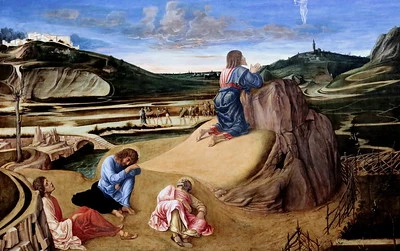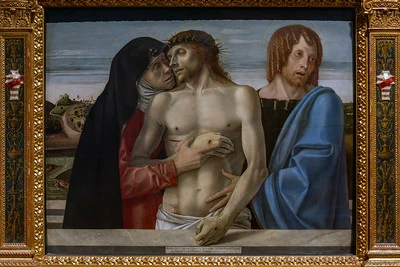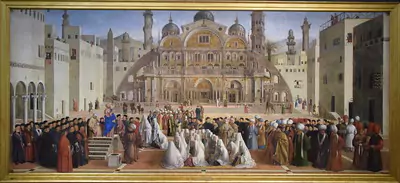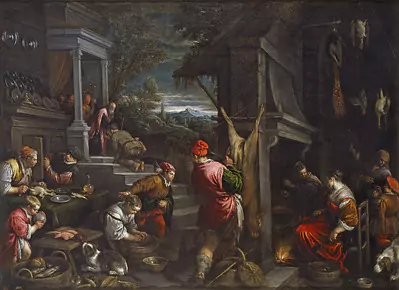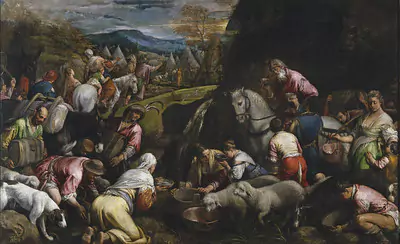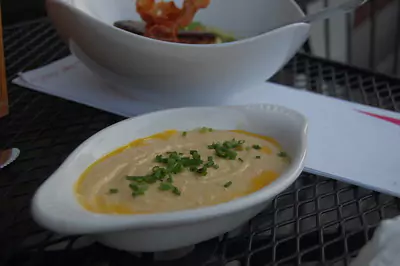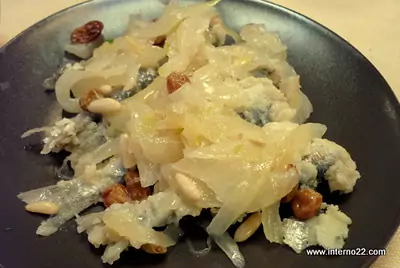Art in Venice
Venice was one of the biggest influences in the Italian renaissance of art which started with the works of Giovanni Bellini and his brother in the 15th century. The venetian school differed from the rest of Italy where the Mannerism style was popular at the time. Venetian Painting would see a decline in the later centuries until a sudden resurgence in the 18th century as the Rococo style replaced the Baroque style only to completely collapse in 1797 after the fall of the Republic of Venice.
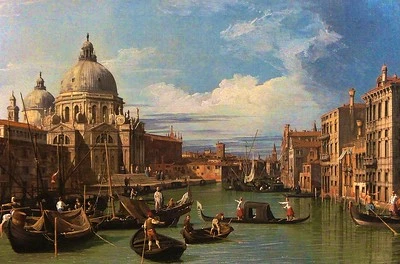
Giovanni Bellini
Giovanni Bellini was born in 1430 Venice, he learned much about painting from his father Jacopo Bellini who was a pupil of one of the leading painters in Florence Gentile da Fabriano. Though today he may be held in higher regard than his brother Gentile Bellini, at the time his brother was more popular. He is best known for revolutionizing the venetian school of painting using deep and rich colors with detailed shadings to create atmospheric landscapes. Unfortunately, most of his works were destroyed when the Doges Palace burned in a fire in 1577. After the death of his brother Gentile, Giovanni is known for completing some of his brothers works, he would latter die at the age of 86 in Venice 1516.
Gentile Bellini
Gentile Bellini was born on February 23, 1429, in Venice Italy as the elder brother of Giovanni Bellini. Like his brother Gentile also learned some painting styles from his father Jacopo Bellini and spent his early career working with his father and brother. In 1479 he would be sent to the court of Sultan Mehmed the second in Constantinople by the Doge of Venice to work as a painter. He is best known for his works depicting scenes of Venice created for the school of San Giovanni Evangelista. Gentile would later die at the age of 78 in Venice 1507 leaving some of his painting unfinished for his brother to complete after his death.
Titian
Titian was born in Pieve di Cadore a small town in the alps north of Venice in 1488 and was regarded as a talented painter at an early age. He would come to be recognized as the greatest painter of the venetian school with his reputation only growing and never declined during his lifetime. He traveled to Venice along side his brother at the age of nine to apprentice under his uncle though he would later go to the Bellini family workshop and learned most of what he knows from Giovanni Bellini who was considered one of the best artists in Venice at the time.
Jacopo Bassano
Jacopo Bassano was born in a town called Bassano del Grappa in the Veneto region in the republic of Venice in 1517. He is best known for his paintings of lush landscapes and scenes of everyday life as well as religious imagery. Around the time of 1540 he was influenced by the mannerist style of painting that was popular in Florence and Rome. Jacopo Bassano would come to have four sons would all become painters and would continue his workshop after his death in 1592.
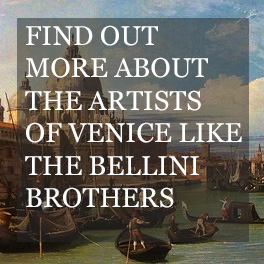
History of Architecture in Venice
Venice has a long history of beautiful architecture that among other aspects of their culture distinguishes Venice from the rest of Italy. With the Venetian republic being the trading center of renaissance Europe the culture of Venice was influenced by various cultures of the time. The architecture of the city is no exception with byzantine and gothic styles among others being displayed.
The Grand Canal
The venetian grand canal is a major water at the center of Venice that accommodates much of the traffic of Venice, though not a singular building it gives shape to the city of Venice and makes the city what it is today. The grand canal was likely built to follow the course of a branch of the Brenta River and to this day is the most recognized aspect of Venice.

The Doge's Palace
The doge’s palace was built in 1340 as the main residence of the doge of Venice. The doge being the main authority in the Republic of Venice in the Italian renaissance, the palace would come to be renovated and expanded upon within the following centuries many times using influence from various cultures in its architecture. The palace is the main landmark in the city of Venice and as of 1996 the building has been operating as a museum.
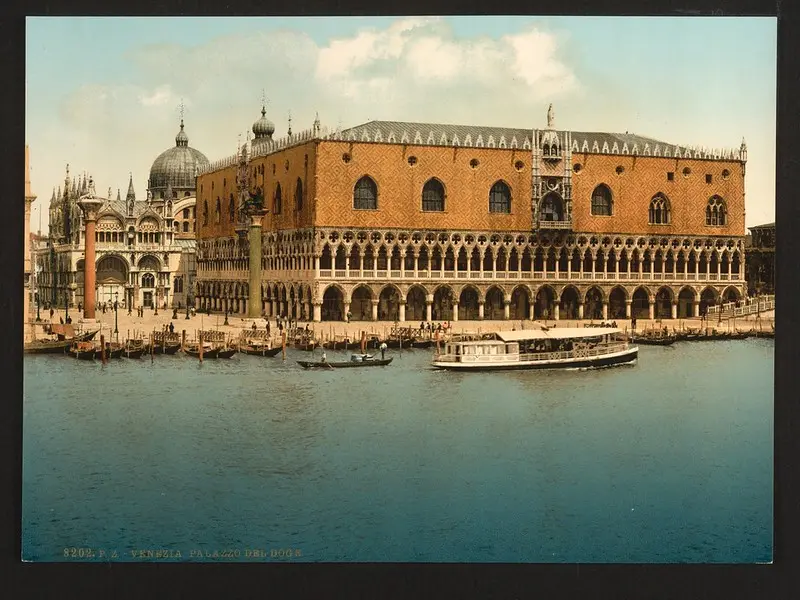
St. Marks Basilica
St. Marks Basilica is the cathedral dedicated the patron saint of the city of Venice St. Mark the evangelists and holds his relics. The cathedral is built on the east of St. Mark’s square near the doge’s palace, historically it was the chapel of the doge and was under they're jurisdiction. The interior of the cathedral is covered with mosaics of religious imagery, as time went on the mosaics had to be changed creating a mismatch of different art styles from over 800 years.
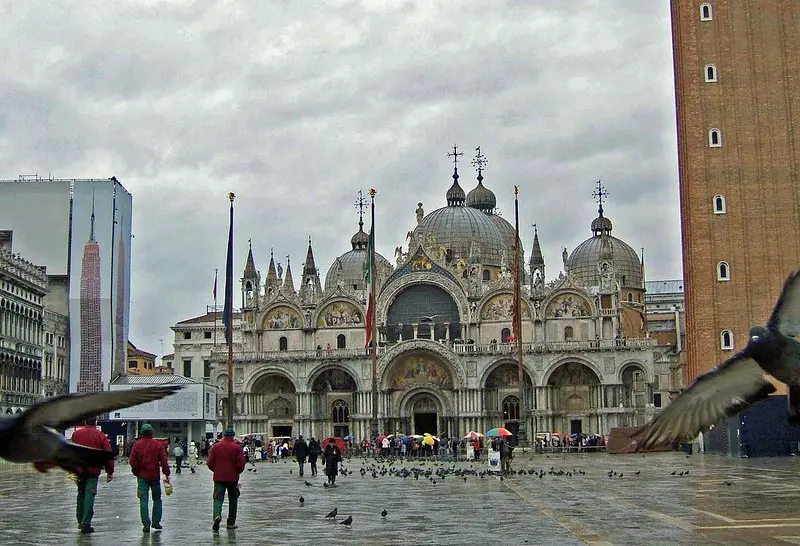
Food
Venice, being on the coast of the Mediterranean, has a long history of using fish and other seafoods in their traditional cuisine. Venice history as the center of trade in the Mediterranean also means it has taken influence from many other cultures in the Mediterranean including Greek Turkish and Arabian. All these factors make venetian cuisine stand out from the rest of Italy.
Featured Recipe
-
Polenta is the most common meal eaten in Venice, it is made from cornmeal or other grains cooked to the texture of porridge and often has cheese like parmesan-Reggiano and sausage or other meat added to it.
View a Recipe -
Sarde in saor is a venetian dish made from fish though primarily Sardines marinated in vinegar and served with fried onions, sometimes a garnish of pine nuts and raisins are added.
View a Recipe -
The Bellini Cocktail is a refreshing drink named after the famed Venetian painter Giovanni Bellini. It is made from two simple ingredients with the first being Prosecco a white wine produced in the Veneto region of Italy and peach puree.
View a Recipe
What's New & Exciting!
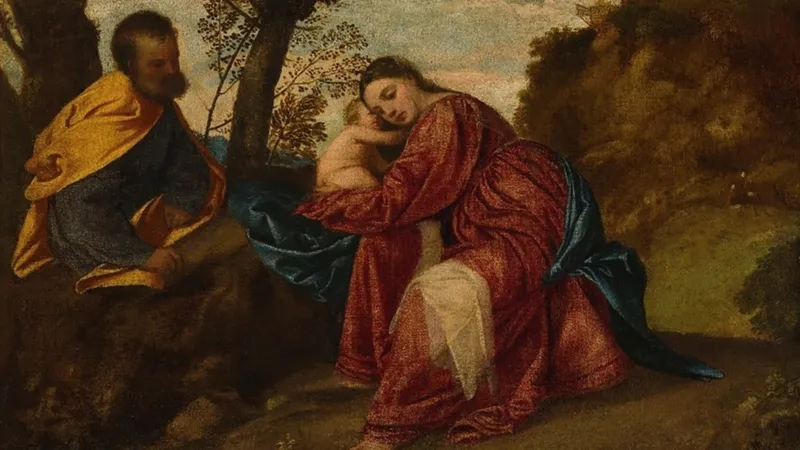
Auction of Rest On The Flight Into Egypt
A masterwork painting from the legendary Venetian painter Titian who we have covered previously will soon be going up for auction in a couple of months on July 2, 2024, at the Christie’s auction house. Andrew Fletcher the global head of the Old Masters department for Christie’s claims "This is the most important work by Titian to come to the auction market in more than a generation and one of the very few masterpieces by the artist remaining in private hands" (2024). The painting in question is titled Rest On The Flight Into Egypt and is a religious work that depicts Joseph, Mary, and Jesus taking a rest while traveling to Egypt with Mary cradling Jesus in her arms, the painting is expected to sell for prices ranging from 15 million pounds up to 25 million pounds at auction.
The painting itself had a truly remarkable history to its story of how it got to where it is today. The painting created sometime in the 16th century has had many owners over the years with one of the earliest being the Austrian emperor Joseph the 2nd where it was hung in the Belvedere Palace in Vienna. It remained in the palace until 1809 at the height of the Napoleonic wars when it was looted by French troops and placed in the Napolean Museum owned by the Bonaparte family only to later find itself in the hands of a Scottish landowner by the name of Hugh Andrew Johnstone Munro and later purchased by the 4th Marquess of Bath at auction in 1878. The painting was then inherited by the 8th Marquess the painting's current owner. Unfortunately, the painting was then stolen in 1995 from the Longleat house near Wiltshire England only to remain missing until 2002 when it was found in a plastic carrier bag in London and returned to its Owner.
Warwick University opens new Venice base to invest in the arts
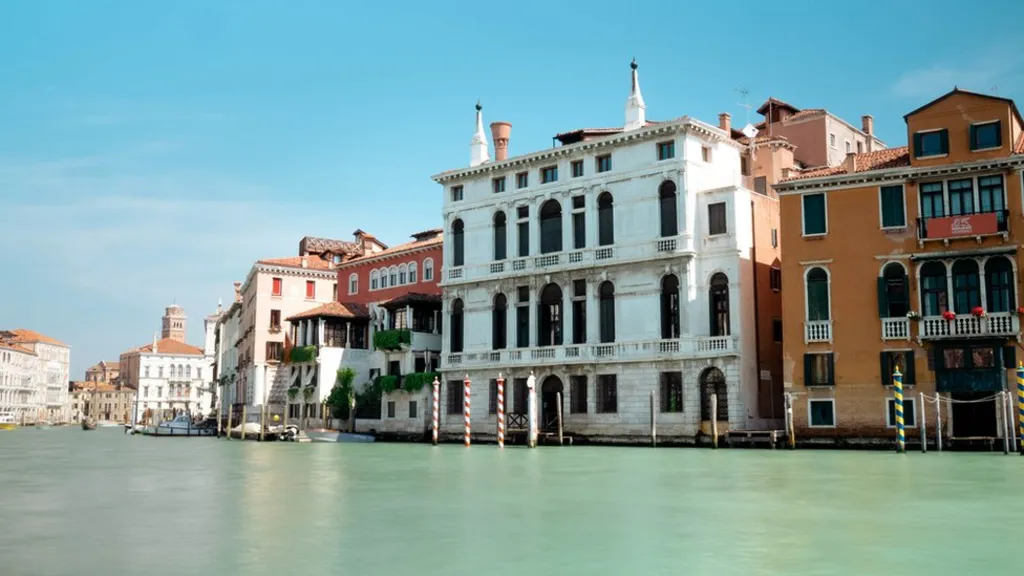 View Original Article
View Original Article
'Undiscovered Titian painting' found in Ledbury church
 View Original Article
View Original Article
